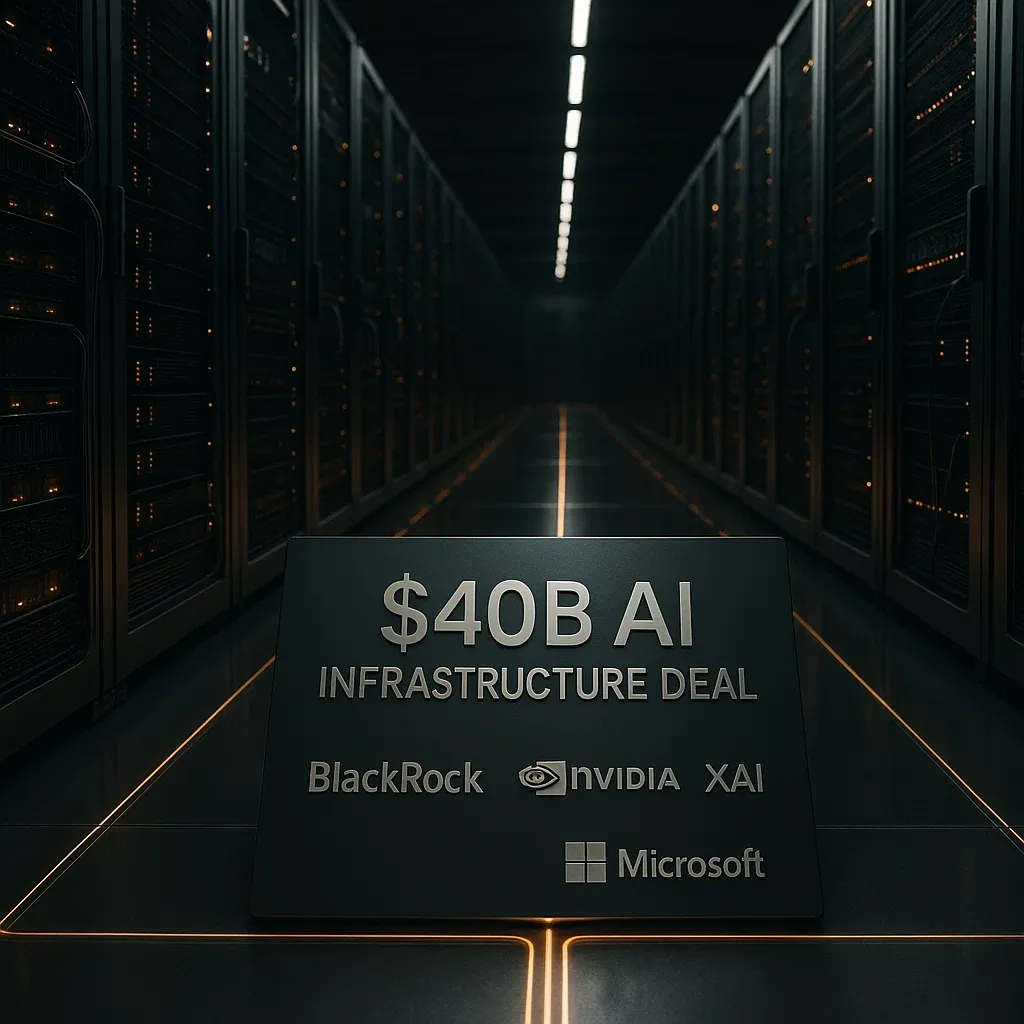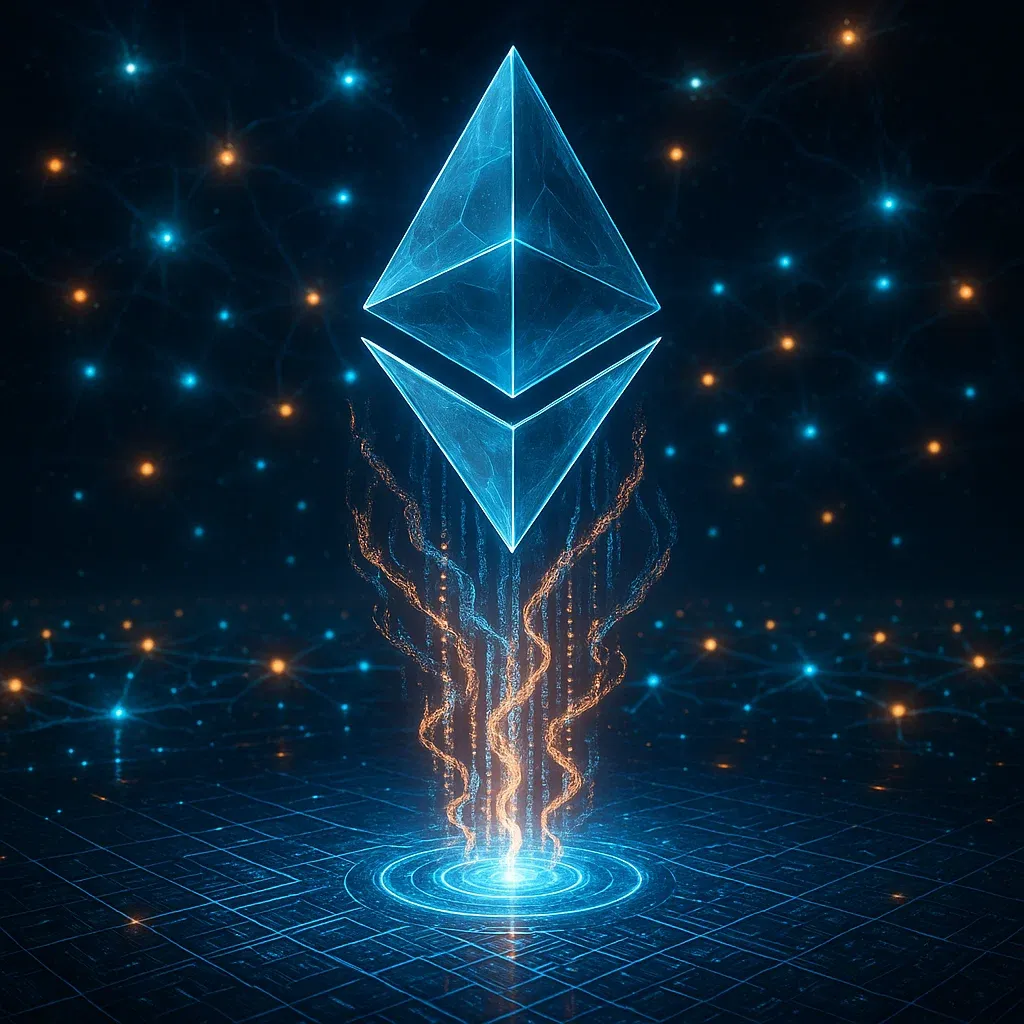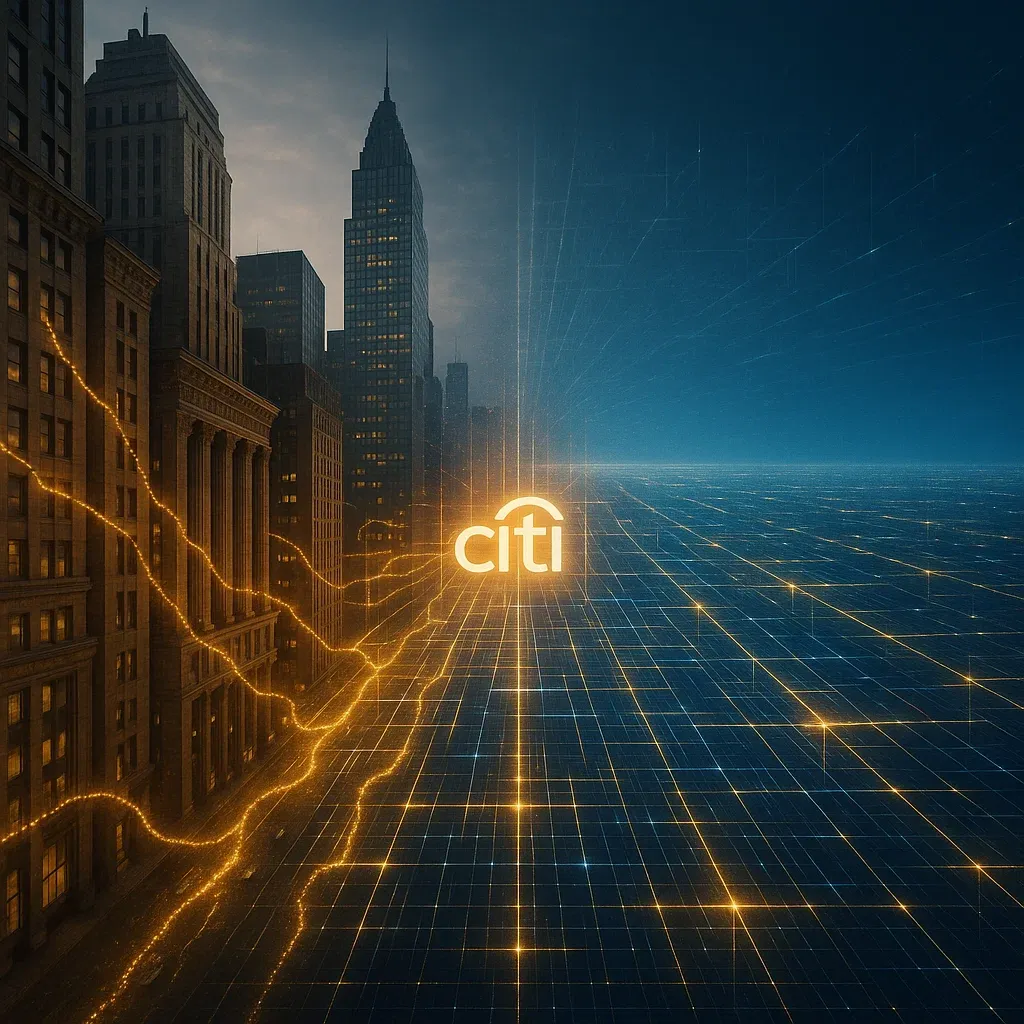BlackRock, Nvidia, xAI, and Microsoft Acquire Aligned Data Centers in $40B AI Infrastructure Megadeal
BlackRock, Nvidia, xAI & Microsoft Drop $40B on AI Infrastructure — The Biggest Bet Yet on Compute Power
In a deal that fuses Wall Street’s capital with Silicon Valley’s code, a $40 billion consortium led by BlackRock, Nvidia, xAI, and Microsoft is acquiring Aligned Data Centers — one of North America’s largest hyperscale operators. The message is clear: compute is the new oil.
⚡ Quick Hits
- 💸 Deal Value: $40 billion
- 🏢 Target: Aligned Data Centers (U.S.-based hyperscale operator)
- 🧠 Buyers: BlackRock, Nvidia, xAI, Microsoft
- 🌎 Scope: Expansion of AI infrastructure across the Americas
- 🔋 Goal: Secure compute power — the key resource of the AI economy
🧱 The New Infrastructure Race
The acquisition of Aligned Data Centers marks one of the largest AI infrastructure deals in history, signaling a strategic pivot toward the real backbone of artificial intelligence — computational capacity.
“Our investment in AI infrastructure reflects our commitment to being at the forefront of technological evolution,” said Laurence Fink, CEO of BlackRock.
This isn’t just a data center buyout — it’s a vertical integration of capital, compute, and intelligence.
With Nvidia’s chips, Microsoft’s cloud ecosystem, xAI’s model development, and BlackRock’s trillion-dollar capital engine, the consortium effectively merges the hardware, software, and financing layers of the AI economy.
It’s the next-generation version of what Amazon, Google, and Microsoft did with hyperscale cloud networks between 2010 and 2020 — but this time, the stakes are higher, the scale is bigger, and the competition is global.
⚙️ Compute Power Is the New Currency
Aligned Data Centers operates some of the largest energy-efficient, high-density facilities in the Americas — the physical foundation on which AI models live, train, and evolve.
For context:
- Every ChatGPT query, Tesla inference, or Claude response runs on compute.
- The limiting factor for global AI adoption isn’t algorithms — it’s access to power, space, and chips.
That’s why BlackRock and Nvidia’s collaboration matters. It combines financial capital and computational capital, forming a new kind of industrial complex where AI capacity becomes a tradable asset class.
“This is what the next decade of innovation looks like — capital flowing directly into compute infrastructure, not just software,” said one technology market strategist.
Expect this alliance to set new standards in AI energy efficiency, data center architecture, and chip deployment strategy across the Western Hemisphere.
🔋 A Decade-Defining Shift
This deal represents more than a one-off acquisition — it’s a macroeconomic signal. Wall Street and Big Tech are converging around a shared thesis: own the infrastructure, own the future.
From power grids to GPUs, the new race isn’t about building apps — it’s about owning the rails that make intelligence possible.
Like the railroads of the industrial era or the cloud wars of the 2010s, this is about control — over distribution, access, and scalability.
And in the AI era, that control means compute.
🪙 Why It’s Not About Crypto (Yet)
While some digital asset traders speculated that this $40B move could lift crypto markets, analysts are clear: this is an AI infrastructure play, not a blockchain one.
The deal’s implications are macro, not immediate. It reflects the global pivot of capital toward AI compute, not speculative digital assets.
Still, the overlap is philosophical — both crypto and AI depend on decentralized compute power and global data networks. Today’s data centers could easily become tomorrow’s AI-and-blockchain hybrid infrastructure, supporting on-chain AI agents, tokenized models, and machine-to-machine economies.
But for now, the liquidity is flowing into silicon, not tokens.
🚀 The Bigger Picture
If successful, this $40B partnership could redefine the scale and ownership of global AI infrastructure, bridging the financial might of Wall Street with the technological dominance of Silicon Valley.
It positions the U.S. and its allies to counter China’s rapid AI build-out, while creating a new class of real-world assets — tokenized or otherwise — centered on computational capacity.
AI power grids are emerging as the new critical infrastructure of the digital age.
And this deal? It’s the first shot in a trillion-dollar arms race for the future of intelligence.
TL;DR
- 💸 $40B consortium — BlackRock, Nvidia, xAI, Microsoft — acquires Aligned Data Centers
- ⚙️ Expands AI infrastructure capacity across the Americas
- 🧠 A vertically integrated strategy: capital + compute + intelligence
- 🏗️ Marks one of the largest AI infrastructure deals in history
- 🔋 Establishes compute power as the core economic resource of the 2030s
- 🪙 No direct crypto impact yet — but reinforces macro capital rotation into AI rails

Recent News
All Time High • Live
Have questions or want to collaborate? Reach us at: info@ath.live











